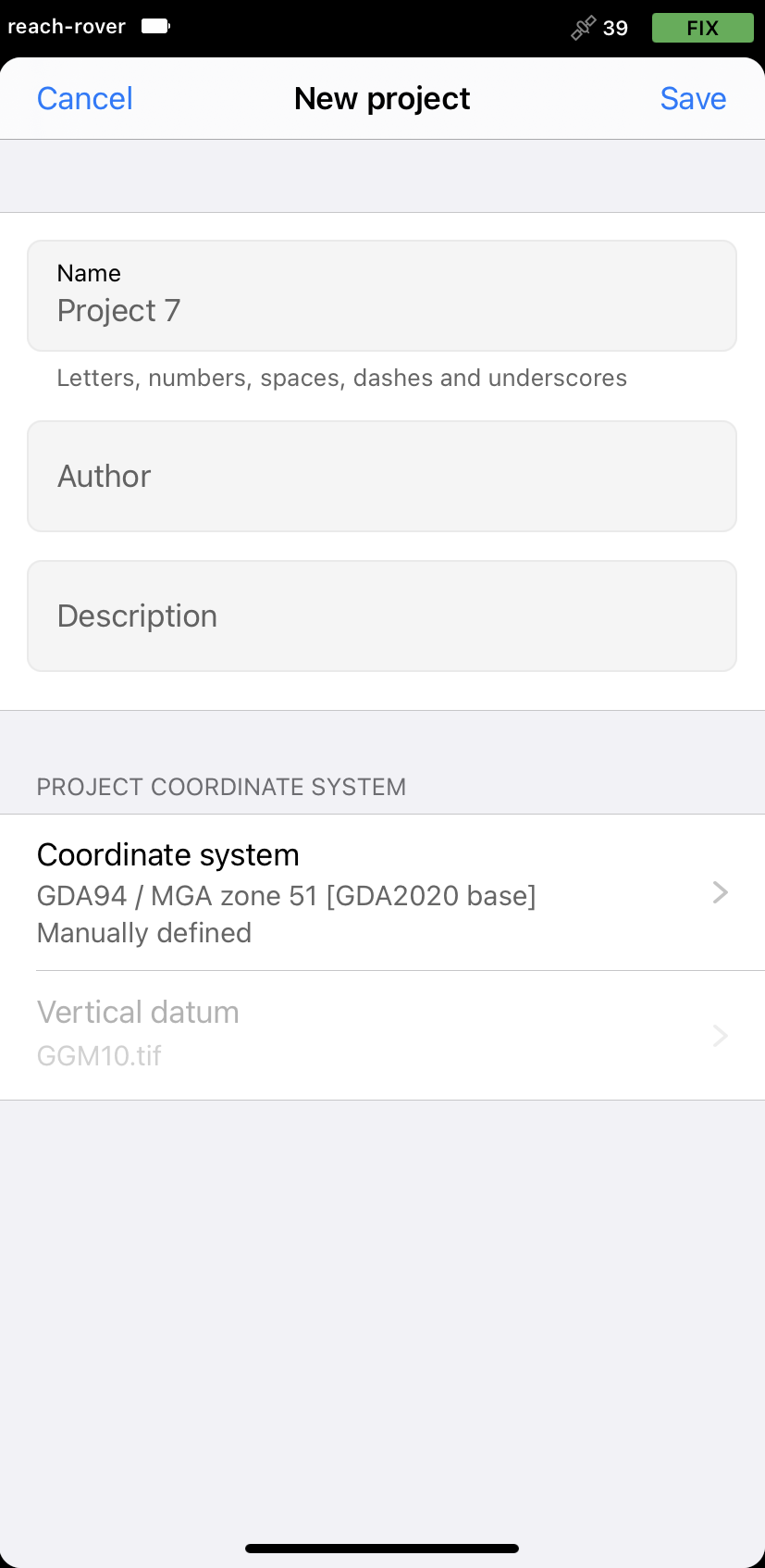Custom coordinate system setup
If you can't find the required coordinate system in ReachView 3 and you know its parameters, you can set it up manually.
To configure the custom coordinate system, you can use 4 different properties:
- Ellipsoid your datum is based on
- Transformation type and its parameters
- Projection type and its parameters
- Geoid model
tip
Since not every group of parameters is required for a coordinate system configuration, you may omit some of them and only use the parameters that you have for your transformation.
- If your base transmits geographic coordinates in one datum and you need geographic coordinates in the second datum, you only perform datum transformation: skip projection and geoid model configurations
- If the projection is performed from the same datum the base set up, you skip the transformation step
- If you decide to work with ellipsoidal height, you do not select the geoid model
To show all features of this tool, we will walk you through the example of transformation from GDA2020 datum to GDA94, performing MGA zone 51 projection, and applying the AUSgeoid2020 geoid model to GDA2020 datum.
Run the New Coordinate System tool#
When picking a coordinate system for your project, tap on the Coordinate system section and click on the plus button placed in the right top corner.

It will open the New Coordinate System screen.
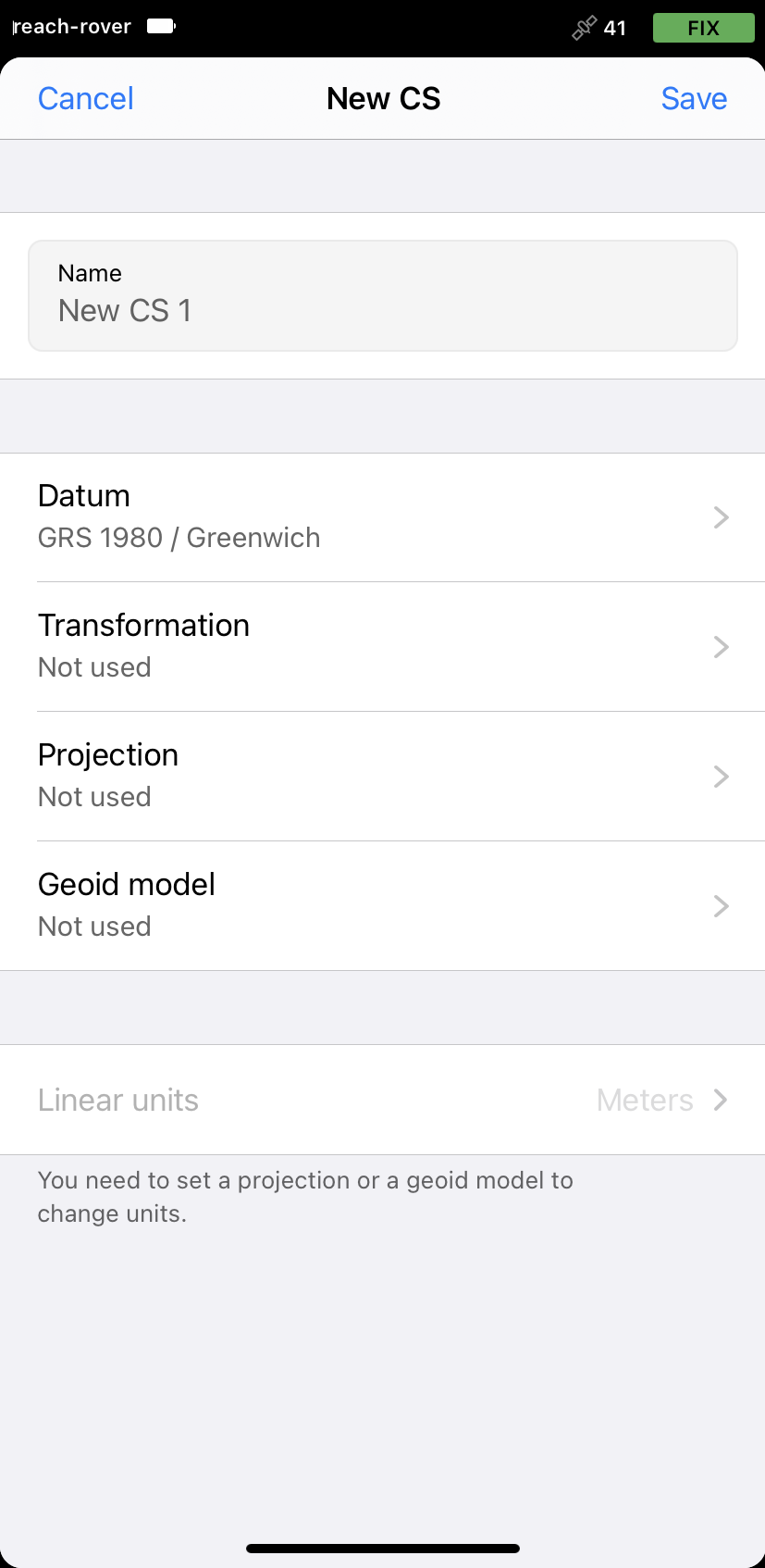
Define the Coordinate System name#
Enter the name of your custom coordinate system. Using this name, you will be able to find it in the list of coordinate systems later on. We will name the coordinate system GDA94 / MGA zone 51 [GDA2020 base].
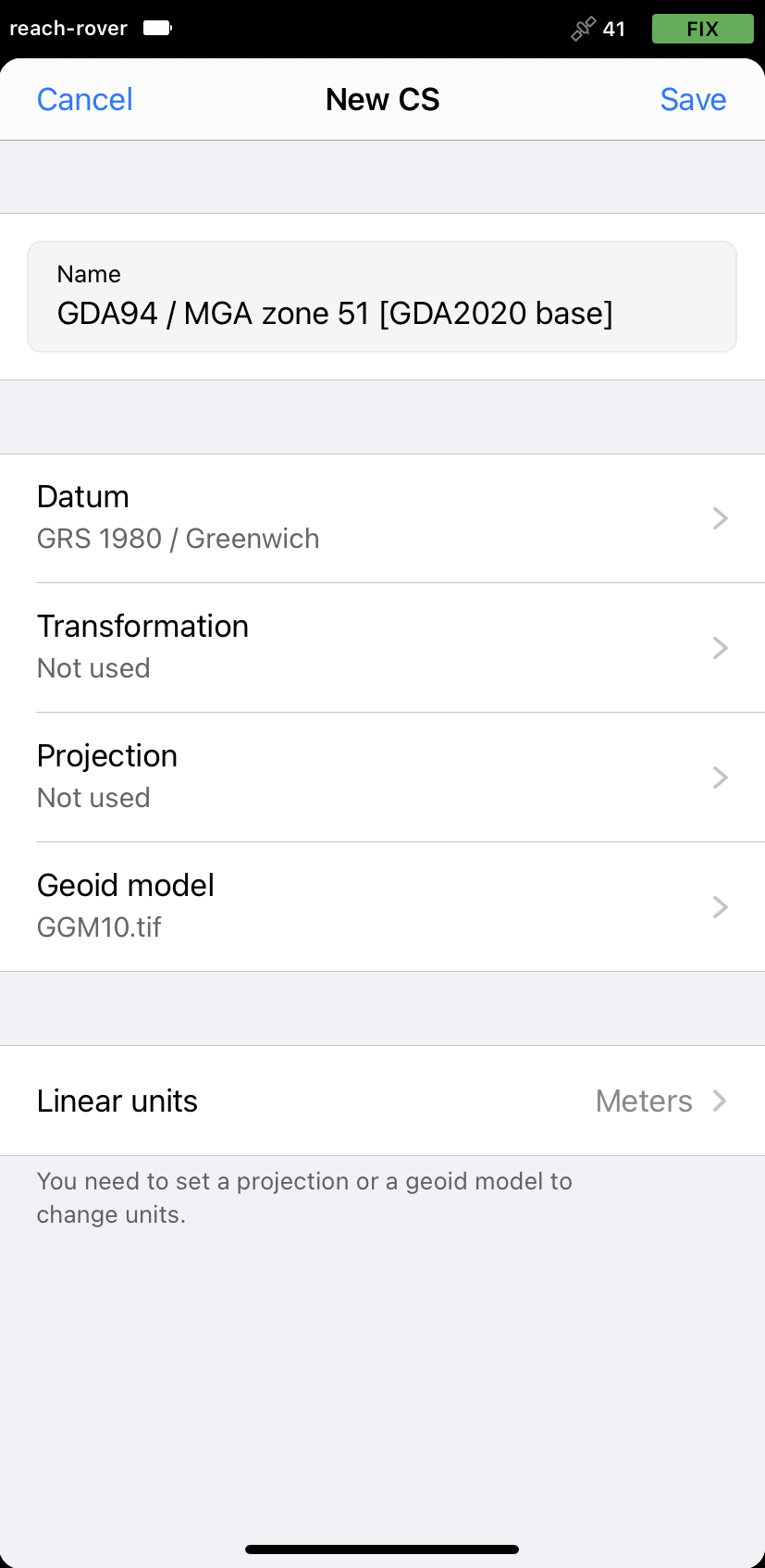
Specify ellipsoid for datum#
note
In this section, we set up the ellipsoid the datum based on. This step is mandatory.
By default, the GRS80 ellipsoid is used. To change it, click on Ellipsoid and choose the required one from the list. It will update the Semi-major axis and 1/f parameters accordingly.

The GDA94 datum uses the GRS80 ellipsoid, so we leave it as is.
Once the horizontal datum is set up, go back to the New Coordinate System screen.
tip
If the required datum is missing, contact us on support@emlid.com.
Specify transformation parameters#
note
You need to configure this option only if your coordinate system uses the datum that differs from the base's one.
- Go to the Transformation screen and switch it on.
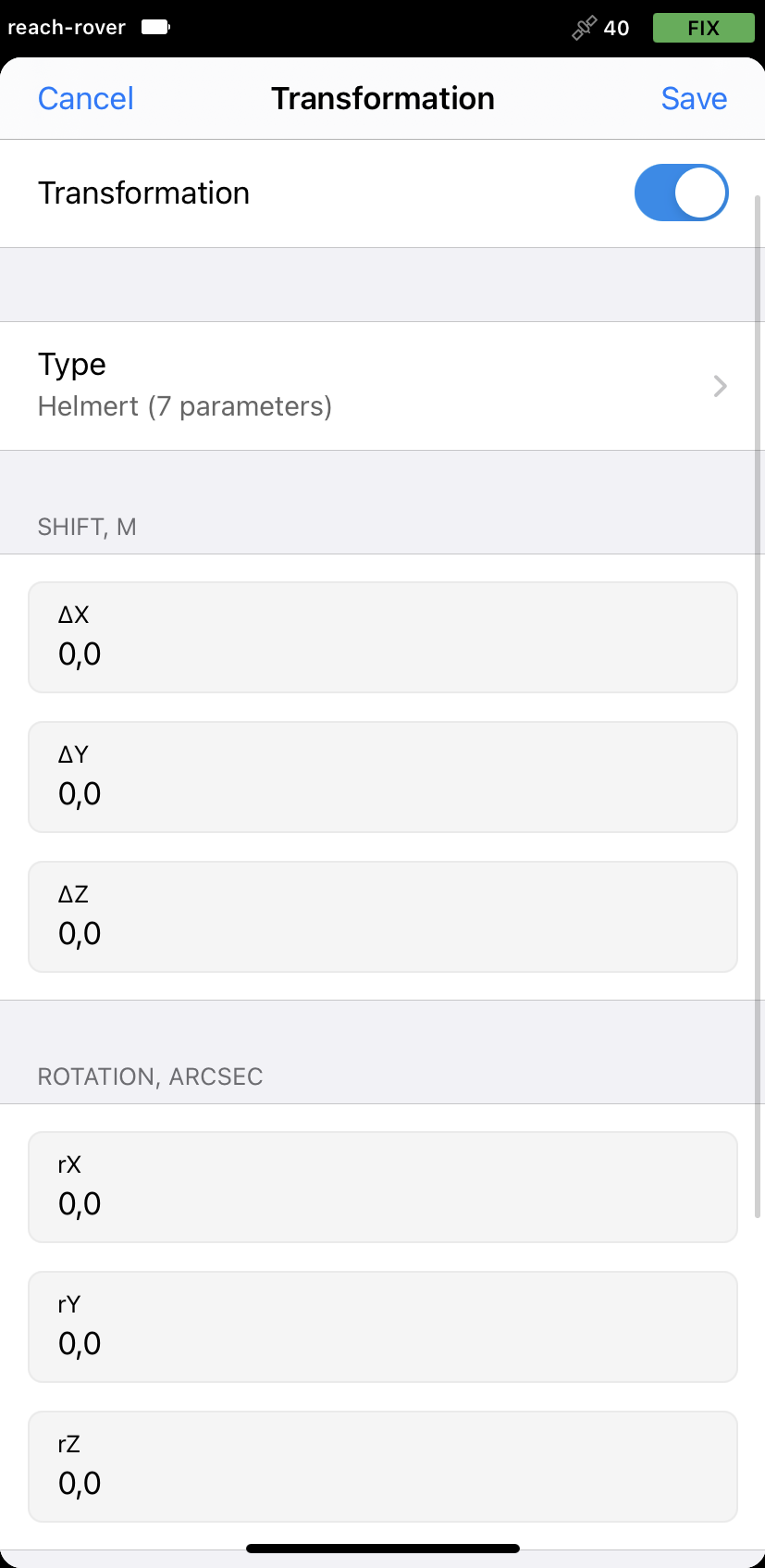
- Choose the required transformation type: Helmert or Molodensky-Badekas
We need Helmert transformation to go from GDA2020 to GDA94 datum.
- Fill in the transformation parameters: there are 7 of them for the Helmert transformation and 10 for Molodensky-Badekas
tip
The tool handles transformations with 3, 4, and 6 parameters as well. You can type in only the parameters you have and leave the others empty.
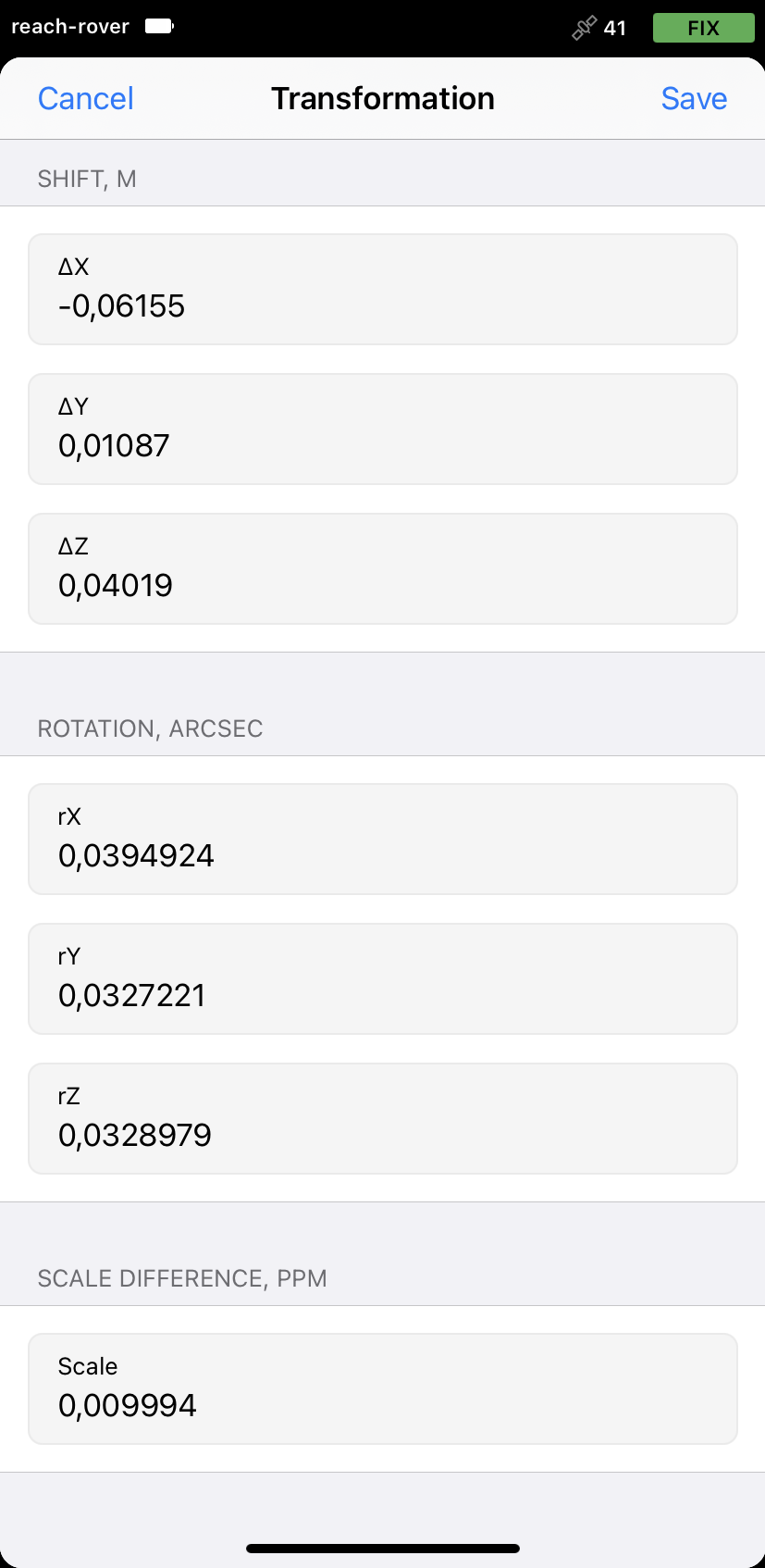
- Click on the Save button
Apply projection#
note
If it is enough to work with geographic coordiantes for your use case, you do not need to perform projection.
- Go to the Projection screen and switch it on
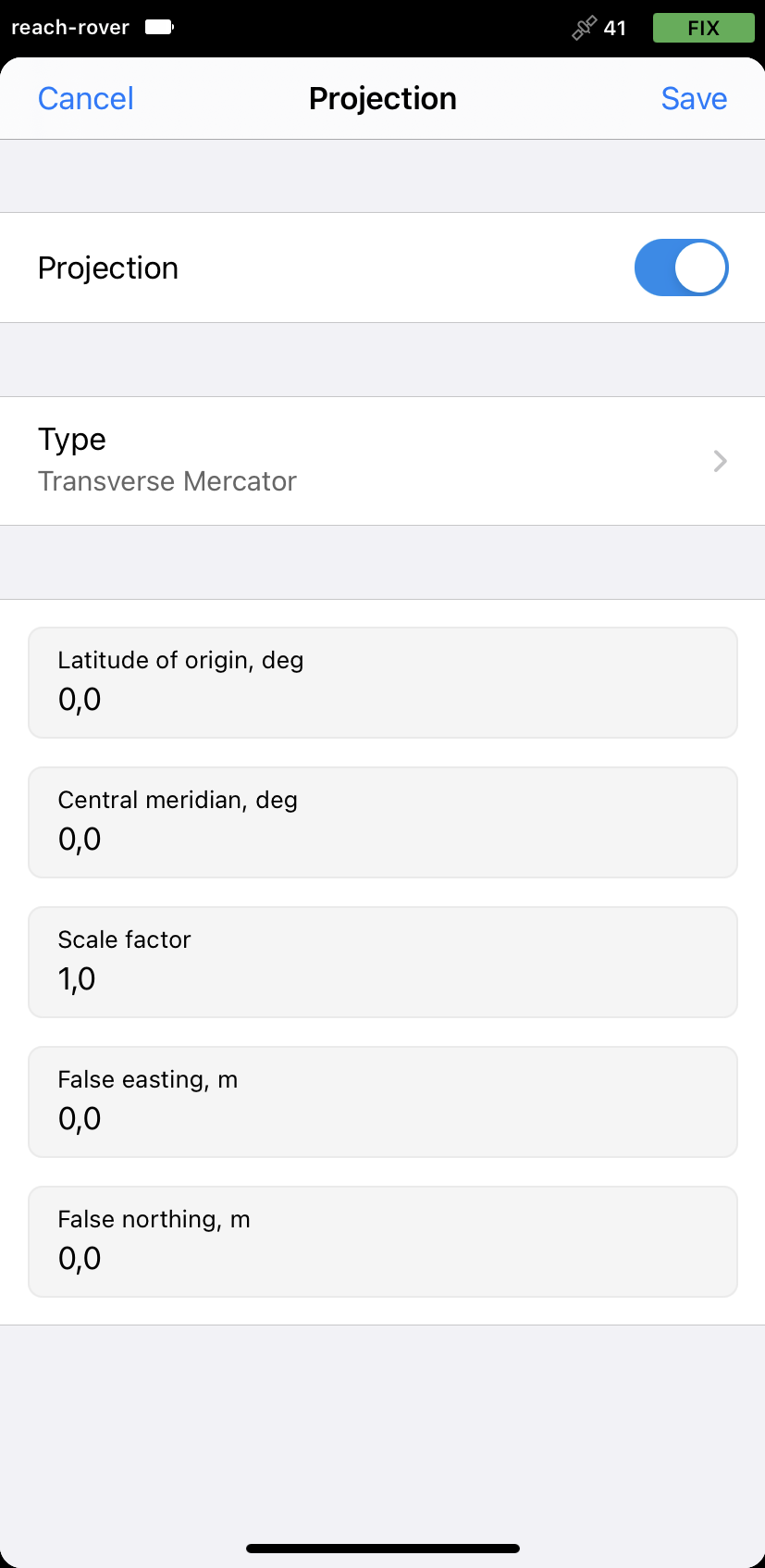
- Choose the required projection type: Transverse Mercator, Oblique Mercator (Variant A), Oblique Mercator (Variant B), Lambert Conic Conformal (1SP), or Lambert Conic Conformal (2SP) projections
We perform Transverse Mercator projection.

- Enter the projection parameters
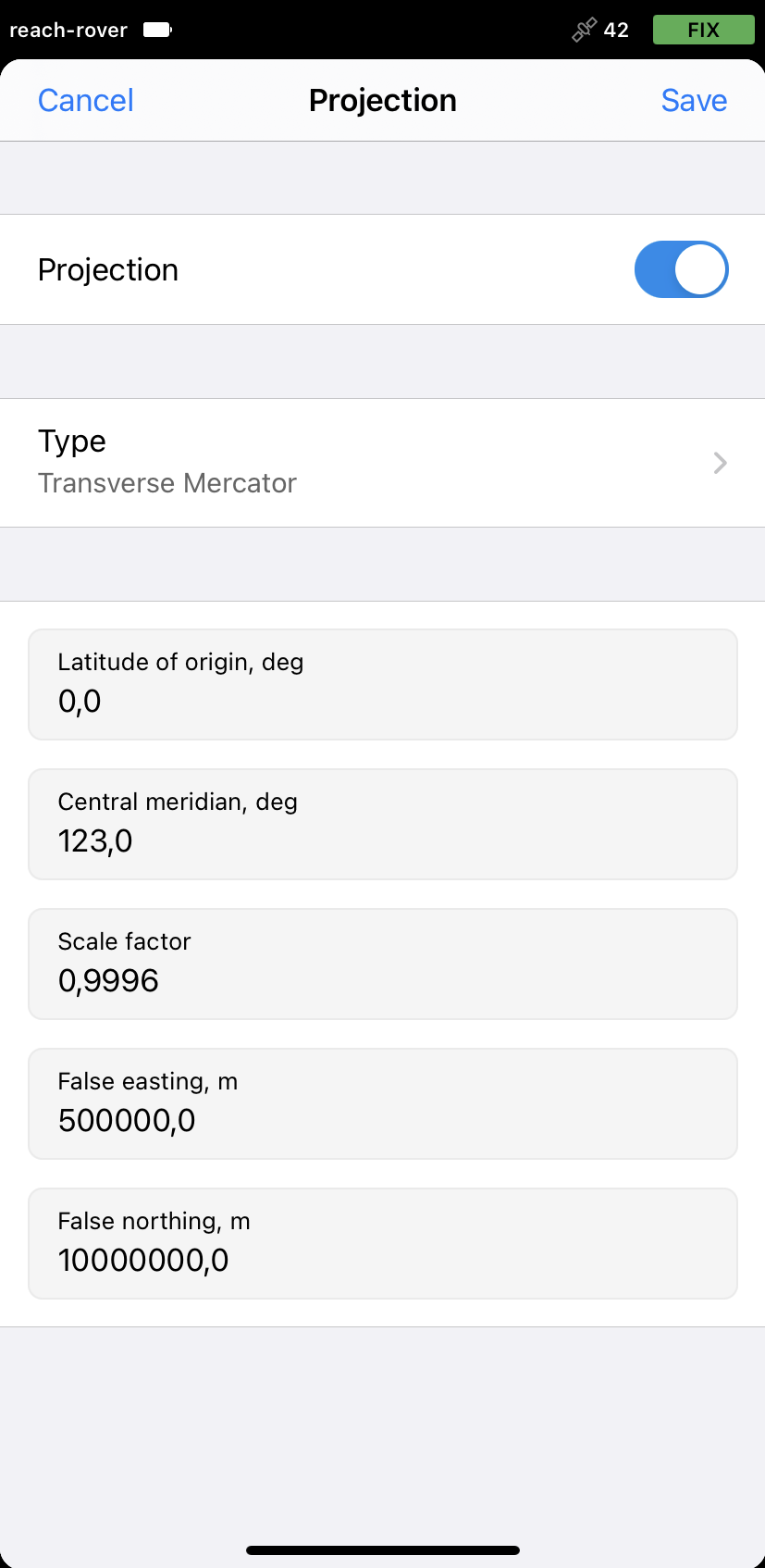
- Click on the Save button
Choose the geoid model#
note
Apply geoid model to your custom coordinate system only if you require orthometric height for your project. ReachView 3 applies geoid correction to the datum the base works with, so make sure to choose the appropriate one.
- Go to the Geoid screen and switch it on
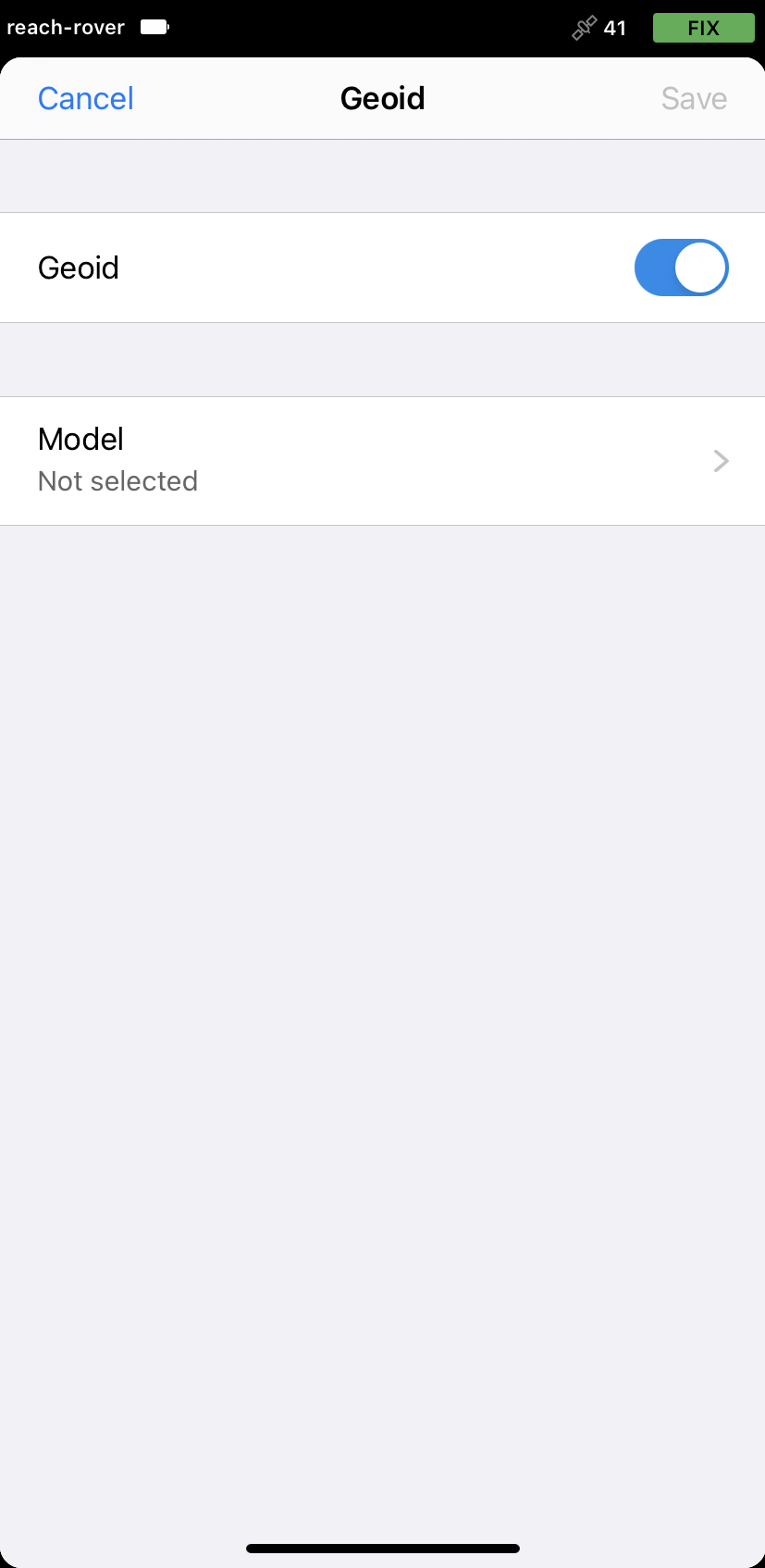
- Click on the Model and look for the appropriate geoid file
We choose the AUSgeoid2020 that meant to be used for coordinates in GDA2020.
The app will suggest you download the geoid model if you have not done it earlier.

- Once the geoid is downloaded, tap on the Save button
Configure linear units#
note
To change the linear units, you must define a projection or a geoid model first. They are displayed when you are working with the project: while collecting points, using the scale bar, and doing stakeout. The chosen linear units do not affect the parameters of a coordinate system.
You can choose meters, feet, US survey feet, or Gold Coast feet as linear units in ReachView 3.
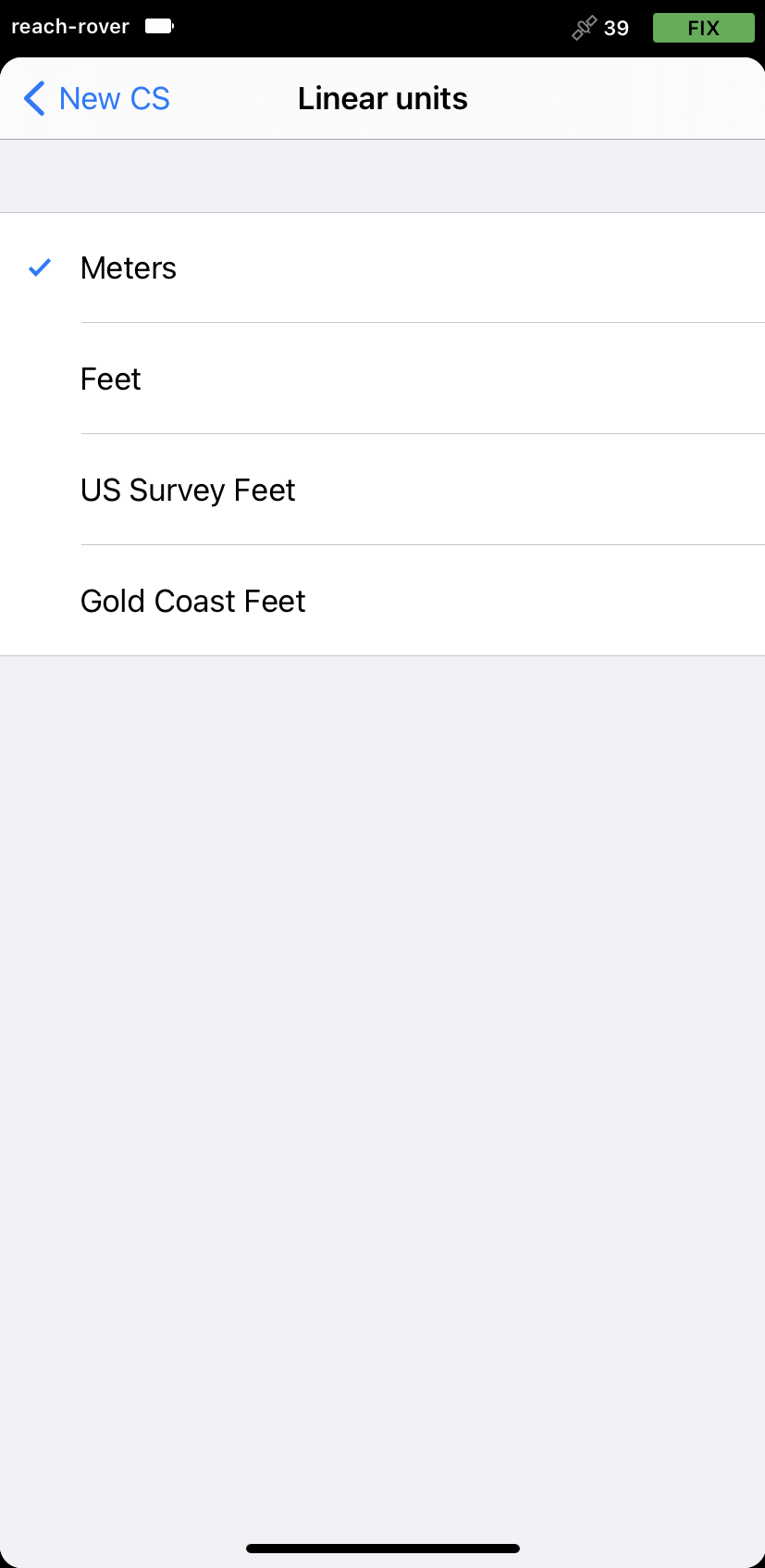
Once everything is configured, tap on the Save button in the New Coordinate System screen to save the coordinate system.
You can continue creating the New project to start working with it or find your coordinate system later while working with any other project. Custom coordinate systems will show up first in the Coordinate System list.
